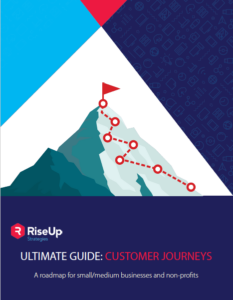A good user experience can be the difference between the success and spectacular failure of a product or service.
User experience is essential in almost any context, from cars, entrance door handles, shower faucets and millions of other applications. In this post, we’re focused on the importance and creation of a great digital user experience.
What is UX?
According to the User Experience Professionals Association, user experience is, “…every aspect of the user’s interaction with a product, service, or company that make up the user’s perceptions of the whole.“
Some think UX and user interface (UI) are interchangeable terms – they are not. UI is focused on the implementation of the experience; it’s the look and feel of a website (buttons, fonts, colours). Although important, it is still separate from UX, which is the sum of the entire experience, all the screens and all the actions a customer takes to complete their goal.
Creating a great UX isn’t always a quick process – it takes time and effort to get it right. But this effort is worth it because UX is vital to the digital success of your business.
Why is UX Important to your Business?
Now that we’ve defined UX, why is it important?
First and foremost, Google measures UX and uses it to determine what position your website will appear in search result pages. The better the UX, the higher you’ll appear in search and the more clicks you’ll get. If there were no other benefits, that alone would be worth the effort…but there are many reasons to invest in UX:
- 44% of shoppers will tell their friends about a bad online experience. (source: Neil Patel)
- Better UI could raise your website’s conversion rate by 200%, and better UX design could yield conversion rates of up to 400%. (source: Forrester)
- UX stats show that 88% of online shoppers say they wouldn’t return to a website after having a bad user experience. (source: Amazon Web Services)
- 70% of online businesses that fail do so because of bad usability. (source: Uxeria)
- 52% of users said they’re less likely to engage with a company that doesn’t use responsive mobile design. (source: Think With Google)
The bottom line: If a user comes to your site and doesn’t like the experience, they are most likely not going to do business with you.
User Experience Leaders
Before we get into the ‘how to’, let’s look at the leaders in digital UX.
There are hundreds of examples of exceptional user experiences in the digital world – just look at Amazon, Walmart or Spotify. Not all organizations have millions to spend on user design and testing, but the good news is for most small/medium businesses and non-profits, you don’t need a ton of cash to make a great experience – just a few simple steps.
How to create a great user experience
Many of the rules and guidelines out there are based on research, but those indicators may not all apply to your website or app. Of course, you should start with the industry’s latest best practices, but the best way to create a good user experience is to test your website or app with users.
- Take a customer-centric approach: Always build your site or app experiences based on what your customer needs. It’s useless to have a great looking app that isn’t helping them achieve their goals. Set this as a primary goal when kicking off your project.
- Understand your customers: Before you do anything, you first have to understand who your customers are and their motivations. Examine all existing data assets you have, website/app analytics, purchase data, demographic information – anything to give you a better understanding of what your customers want.
Related: Check out our quick guide on Customer Journeys for help in creating audience personas.
- Engage colleagues: Depending on the size of your organization, you will want to get your colleagues involved in the process. Get their input/data at the early stage – do NOT try to design by committee and make everyone happy (it’s impossible).
- Map the customer journey: Create a map of the optimal user experience with your site or app. Be sure to minimize the steps and remove the barriers between the customer and their goal.
- Create a prototype: Once you’ve created your customer journey, turn it into a prototype or series of wireframes to show precisely how it will function.
- Test, refine, test: When the prototype/wireframes have been created, test them – first internally, then with external user groups. There are many prototyping tools and feedback collection tools available to help – we like proto.io and Hotjar but find one that fits your needs.
- Launch it: Once you’ve gone through multiple iterations of testing, it’s time to move to a live environment. It can be tempting to continue testing (just one more round), but it’s better to launch an experience that you feel is 90% there, rather than wait for months and potentially lose sales/market share.
- Never stop enhancing: Never stop tracking and interpreting your site/app data to identify barriers and implement fixes. Accomplish this using Google Analytics or other tools like Hotjar.
UX can be complex, but it is a vital exercise well worth the expense.
Need advice or guidance around how to create a user experience that delights your customers and drives sales? Contact us today.
Drive customer revenue and loyalty with our Ultimate Guide: Customer Journeys. Get detailed information about mapping your customer’s experience and identifying opportunities for enhancements.